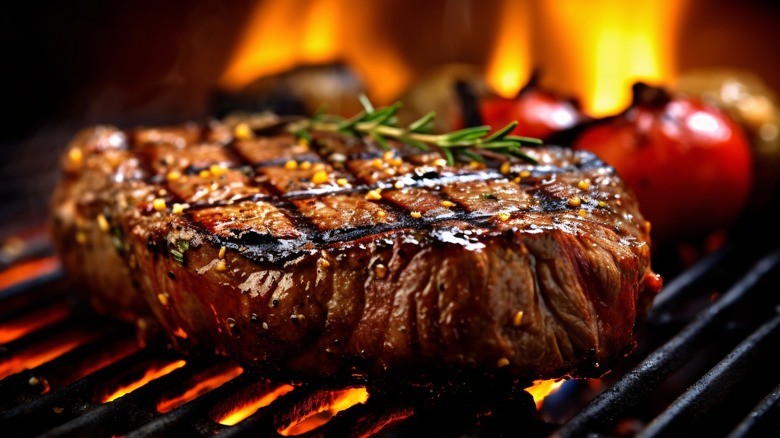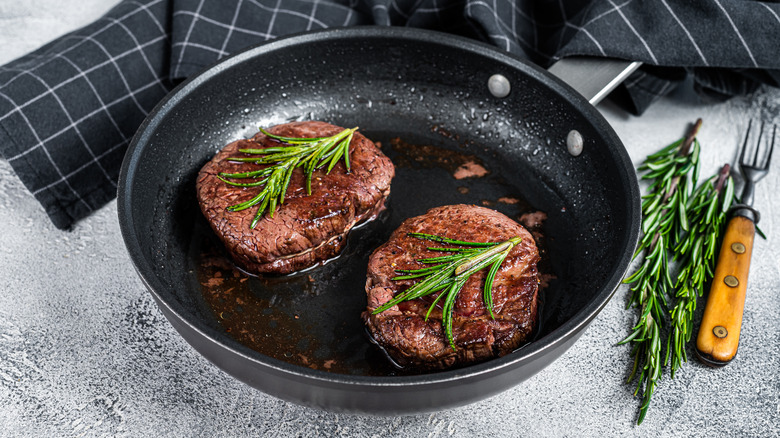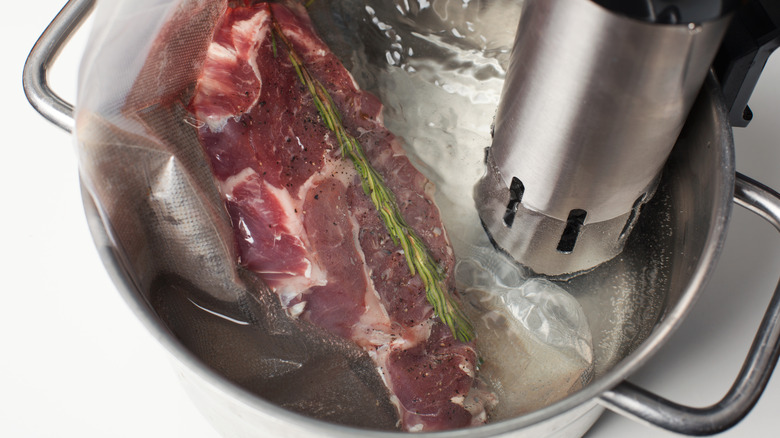The One Meat You Should Avoid Cooking On The Grill
There's nothing like firing up the grill on a sunny afternoon with family and friends, everyone anticipating mouthwatering beef grilled to perfection. But as you shop for the summer celebration, there are specific cuts of meat you want to avoid if you're planning to grill. The one you should avoid at all costs is the treasured filet mignon.
The filet mignon is a king's cut of meat, with tender juiciness waiting to delight the senses when prepared correctly, but grilling isn't the approach you want to take. The filet comes from the tenderloin, a small muscle that remains mostly inactive and doesn't become tough as the cow matures. The cut is so small that it only makes up 3% of the animal, and that relative scarcity is reflected in the price at which it tends to list.
The tenderloin is also a lean cut of beef, often the choice cut for tartare. It's difficult to distribute heat evenly on a grill, and coupled with a filet's minimal fat content and tender structure, cooking a filet on a grill can dry it out and make it chewy. The filet has a slightly sweeter and more muted meaty flavor than some of its steak counterparts, and it requires a special kind of preparation to tease out the subtle flavors within.
Cook a filet mignon in a pan
One way you can prepare a filet mignon is by using the reverse sear technique. First, set your filet out for at least 30 minutes to remove the chill from refrigeration, then preheat your oven to 275 degrees Fahrenheit. Next, get a cast-iron piping hot, which is the key to cooking any steak on the stovetop. Leave it in the oven for about 25 minutes, add a bit of oil to the pan, and give the meat a sear on both sides, about a minute per side.
Alternatively, you can cook a filet by pan-searing it for 5 minutes per side, basting it with herb-infused butter frequently, then finishing it in the oven for another 5 minutes. Resting time is just as important for this method as it is for a reverse sear, so let your steak stand for 6 minutes or so after cooking it. Utilizing this method gives you the option of creating a delicious sauce in the pan after you cook your steak.
A filet is a treat that requires some special attention, and the juicy result is well worth the extra consideration it requires. When you've got a craving for fresh-grilled fare, instead of reaching for the "Rolls Royce of beef," go for a fattier cut like a ribeye or a New York Strip and get the most out of your cook. But if your heart is set on a tender filet mignon, try going the sous vide route rather than the grill.
Try the sous vide method for a filet
The sous vide method gives you complete control over the temperature of your steak at all times, and involves vacuum sealing your filet and then immersing it in water to cook. The water slowly and evenly heats the cut, and since the water within it has nowhere to go, it's essentially impossible to overcook it this way.
It's important to note that when using the sous vide method, it won't give you a sear on your filet. Some foods cook just fine with the sous vide method alone, but a steak isn't truly a steak without a beautiful sear. Once the sous vide process is complete, get out a piping hot pan and sear your sous vide filet for a couple of minutes on each side to achieve a gorgeous crust.
If you're hoping to impress with your grilling skills, reach for the fattier cuts like ribeye or a strip steak for the most delicious possible outcome. A filet mignon costs a pretty penny, and you don't want that money going up in flames. Save the filet for a date night when you want to excite your significant other with your culinary abilities.


